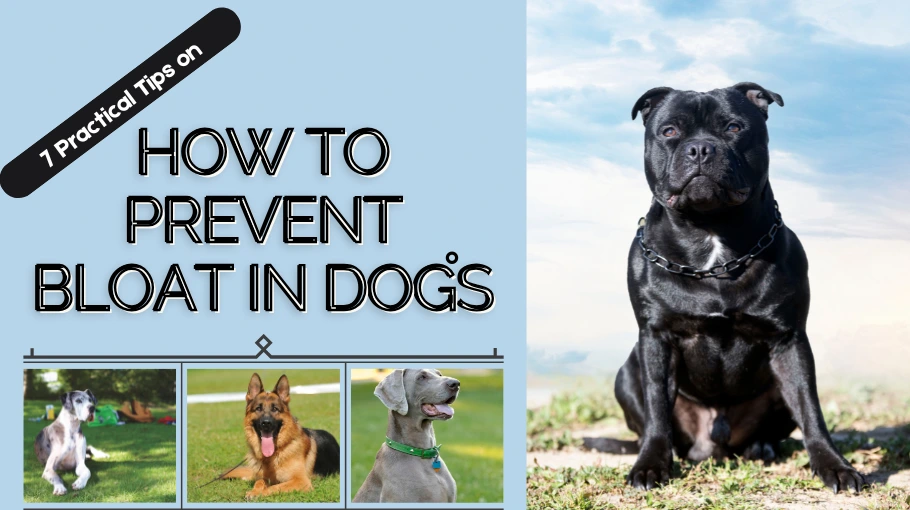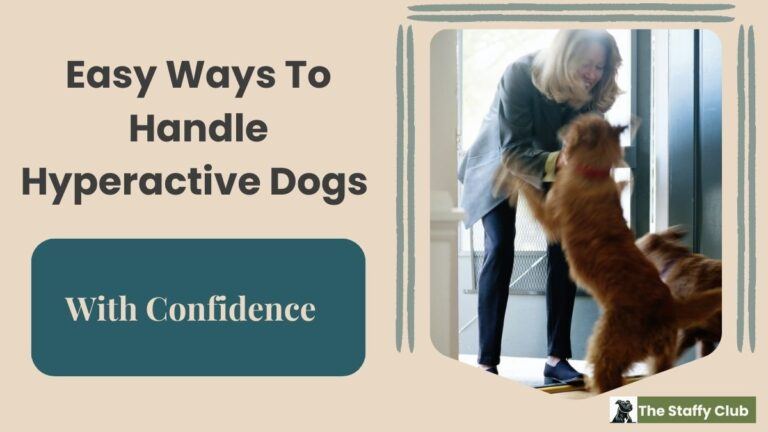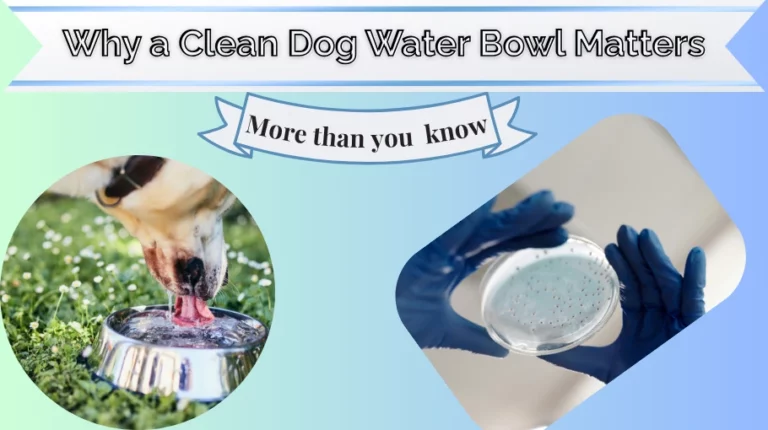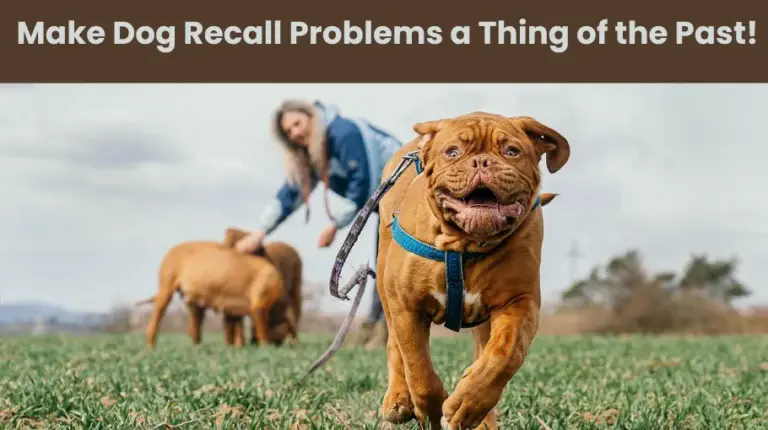7 Practical Tips on How to Prevent Bloat in Dogs

Bloat… I thought I knew what it was. I mean, I’ve stuffed my face with cake and felt all bloated and uncomfortable. Once I learned about how it affects dogs though, I knew I had to do a deeper dive into how to prevent bloat in dogs. It’s so serious, every dog owner should be aware of it. Certain breeds are higher risk (more on that to come).
Weirdly enough, I wasn’t even aware of this. I was digging into something else (green algae in dog water bowl, of all things), I stumbled on the whole “bloat debate” in the process. Turns out, it’s a lot scarier for dogs than it is for us. Like, life-threatening scary. Seriously.
Table of Contents
What Is Bloat in Dogs?
So, what actually happens with bloat? Imagine your dog’s stomach filling up like a balloon with gas. As if a swollen stomach isn’t uncomfortable enough, picture this… the dog’s stomach twisting in on itself, trapping all that gas inside and cutting off blood flow. Vets refer to this as gastric dilatation and volvulus (GDV). It’s not just uncomfortable; it’s an emergency that needs quick action.
This isn’t the same bloated feeling you get after overeating. It’s way more serious and can come on fast. That’s why knowing what to watch for and how to prevent bloat in dogs is super important.
Why Does Bloat Happen?
Honestly, the exact cause is still a bit of a mystery — vets call it “multifactorial,” which basically means there’s a bunch of things that can team up to cause it. But there are some usual suspects:
- Eating or drinking too fast: Like when your dog gulps their dinner like it’s their last meal. That can make them swallow air, which fills the stomach with gas.
- Big meals or one big meal a day: Some dogs get bloated more when they eat one huge meal instead of smaller, more frequent ones. I’m glad we went with free-feeding vs scheduled meal times.
- Exercise after eating: Jumping, running, or playing right after a meal can make things worse.
- Stress and anxiety: Believe it or not, stressed-out dogs might be more prone to bloat too.
- Deep-chested breeds: Dogs like Great Danes, German Shepherds, Weimaraners are cosnsidered to have a high risk of bloat, but even Staffies are moderate risk because of their body shape.
There are probably other things involved too, like genetics, but these are the main things to keep an eye on.
Signs Your Dog Might Have Bloat
This is where it gets tricky, because early signs of bloat can be easy to miss or confuse with other issues. Here’s what to watch for:
- Swollen or hard belly — looks and feels like a balloon about to pop
- Restlessness — pacing, unable to get comfortable can be signs a dog is in pain
- Drooling or dry heaving — like they’re trying to vomit but nothing comes out
- Acting anxious or whiny
- Rapid breathing or a fast heartbeat
If your dog shows any of these, and you suspect bloat, get to a vet or call ahead. Bloat is one of those things where minutes really count.
How to Help Prevent Bloat in Dogs
Okay, so bloat sounds scary, and it certainly can be. But the good news is, there are things we can do to help lower the risk. Here’s what I’ve learned from reading through the forum threads (like this GSD story) of other dog owners and digging deeper into the research:
- Feed smaller, more frequent meals: Instead of one giant meal, try splitting their food into two or three smaller ones during the day. It helps keep the stomach from getting overstuffed and reduces gulping.
- Slow down speedy eaters: If your dog’s a vacuum cleaner at mealtime, consider using a slow feeder bowl or putting a big clean rock or tennis ball in their food dish to make them eat slower. Just make sure the object is large enough that the dog can’t swallow it accidentally.
- For multi-dog households, that might mean feeding separately so nobody feels the need to guard or rush.
- Keep water bowls fresh and accessible — but don’t let them gulp a ton right after eating: This is where it gets interesting. Some dog owners think raised bowls help, others worry they might increase bloat risk. I’m undecided but would err on the side of caution. Of all the types of water bowls for dogs, elevated are risky for bloat-susceptible breeds. If one is needed, the best is adjustable.
- Avoid vigorous exercise around mealtimes: Let your pup chill for at least an hour before and after eating to give their tummy a rest. Ours are free-fed and don’t tend to eat after a walk or run-around.
- Manage stress: Yep, dogs can get stressed out too, and keeping them calm can help reduce the chances of bloat.
- Know your breed risk: If you have a deep-chested breed, chat with your vet about any extra precautions you might need to take.
What to Do if You Think Your Dog Has Bloat
Now, this part is super important because my understanding is that bloat isn’t something you want to wait around on. If your dog starts acting weird, like pacing, drooling a lot, trying to vomit but nothing comes up, or their belly looks really swollen and tight — don’t mess around.
Call your vet or emergency clinic immediately. Bloat can get serious fast, and the sooner your dog gets help, the better.
If you can get to a vet, they’ll likely do some quick tests and might need to decompress the stomach or even do surgery if it’s twisted. I know it sounds scary, but vets are pros and have saved plenty of dogs from this.
Final Thoughts on Bloat and Keeping Your Dog Safe
Bloat is a big deal, but it’s not something to panic about constantly. It is something to be vigilant with when your dog’s eating and drinking. Being aware and making a few simple changes to your dog’s routine can make a huge difference.
Keep their meals manageable, water fresh and clean (more on the best bowls coming soon!), and give them plenty of chill time around mealtimes.
And hey — if you notice any of those weird signs, trust your gut and get your dog checked out.
Bloat might be scary, but with a little know-how, you’re already giving your dog the best shot at staying safe and happy.






